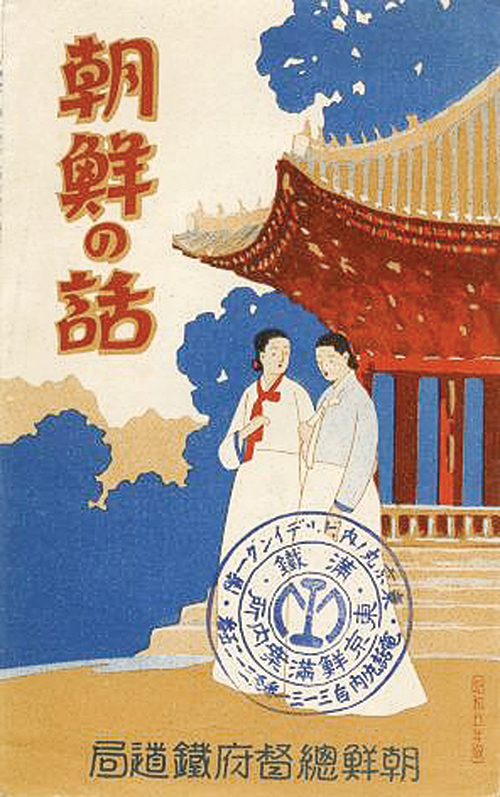
From 1910 to 1945, Japan ruled Korea, its colony. During this time Japan created an idealized outward image of Korea—known as Koreana—by using various mediums for promotion.
Koreana refers to the ideal image of Korea—a mythological representation and fantasy version of Korea at odds with what the country is really like.
Present-day Korea is gaining interest from surrounding areas and Korean cultural representations and arts have become huge in the popular culture of East Asia. We have even seen this popularity trickle into America.
“How do they promote themselves, as a country, to their neighbors?” asked Katherine Morrow, the program administrator for the PSU Institute for Asian Studies. “It’s all about the media. Right now, especially in East Asia, there is a lot of interest in Korean popular culture; television, movies, music—and some of that’s trickled into America…So how can the tourism industry [in Korea] capitalize on this?”
Professor Hyung-Il Pai proposes that there is renewed interest in Korea to recycle these images from the past into use today.
These Koreana images will certainly do well to promote the country, but what about those who want to be identified by their own distinct culture rather than by images created during the years Korea was colonized by Japan?
Pai will answer these questions and more during her lecture, titled “Staging ‘Koreana’ for the Tourist: Legacies of Native Types and Must-See Destinations,” this evening at Portland State. The lecture is sponsored by the Institute for Asian Studies.
Pai, who teaches at the University of California, Santa Barbara, will speak for about 45 minutes, and there will be time for a question-and-answer period following the lecture.
Pai is the author of Constructing Korean Origins: A Critical Review of Archaeology, Historiography and Racial Myth in Korean State Formation Theories and co-editor of Nationalism and the Construction of Korean Identity.
She has published in international journals on a wide range of topics related to the politics and history of East Asia in academic areas like archaeology, museum studies and heritage management.
“Pai is a leading scholar in the area of heritage tourism, one the most exciting areas of historical research today,” said Ken Ruoff, a PSU professor and the director of the Center for Japanese Studies. “We live in a very mobile world and, increasingly, it is through visits to heritage sites that people’s understanding of the past is shaped.
“Anyone who ever took a family trip or field trip to a heritage site had his or her view of the past shaped by the experience,” Ruoff continued, “but heritage sites tend to present the ‘official’ view of the past—in other words, a glorified account of the national past.
“For this reason, it is important that scholars offer a correction to the narratives put forth at heritage sites,” Ruoff said. “Koreana often represents an idealized interpretation and packaging of the supposed identity of Korea, in the same way that official heritage sites in the United States offer an edifying account of our past.
“It is good, in a general sense, for students, staff, faculty and community members, by listening to lectures such as the one by Dr. Pai, to be inoculated against the messages put forth at heritage sites and to learn to ask questions such as, ‘What inconvenient details have been left out of the story presented here?’” he added.
Staging “Koreana” for the Tourist: The Visual Legacies of Native Tyes and Must-See Destinations
A lecture by professor Hyung-il Pai
Thursday, May 9, 6 p.m.
5th Avenue Cinema, room 92
510 SW Hall St.
Free and open to public
Ruoff’s most recent book, Imperial Japan at Its Zenith, winner of the 2012 Frances Fuller Victor Award for General Nonfiction, includes three chapters about heritage tourism, including one about Japanese tourism in colonial Korea.
Pai’s lecture is included as part of their efforts to bring forth relevant information about what they are doing today as seen in a historical context.
“I think the audience will find this talk interesting for several reasons,” said Sharon Carstens, the director of the Institute for Asian Studies. “First, we usually think of tourism in Asia as Western tourists visiting these ‘exotic’ destinations, but much of professor Pai’s work has focused on the development of Korean tourism in the early 20th century to cater to Japanese tourists who were encouraged to see historical links between these two cultures.
“Second, following the Japanese occupation of Korea that ended with World War II, Korea has been very focused on reclaiming and saving its cultural heritage in very systematic ways, which then feeds into heritage tourism and the construction of Koreana both for Koreans themselves and for foreign tourists, many of whom are Asians who share some similar anxieties about the destruction of their distinctively Asian cultural heritage,” Carstens said. “So this gives us a different view of this issue through a unique lens that I believe students and others will find revealing and fascinating.”

